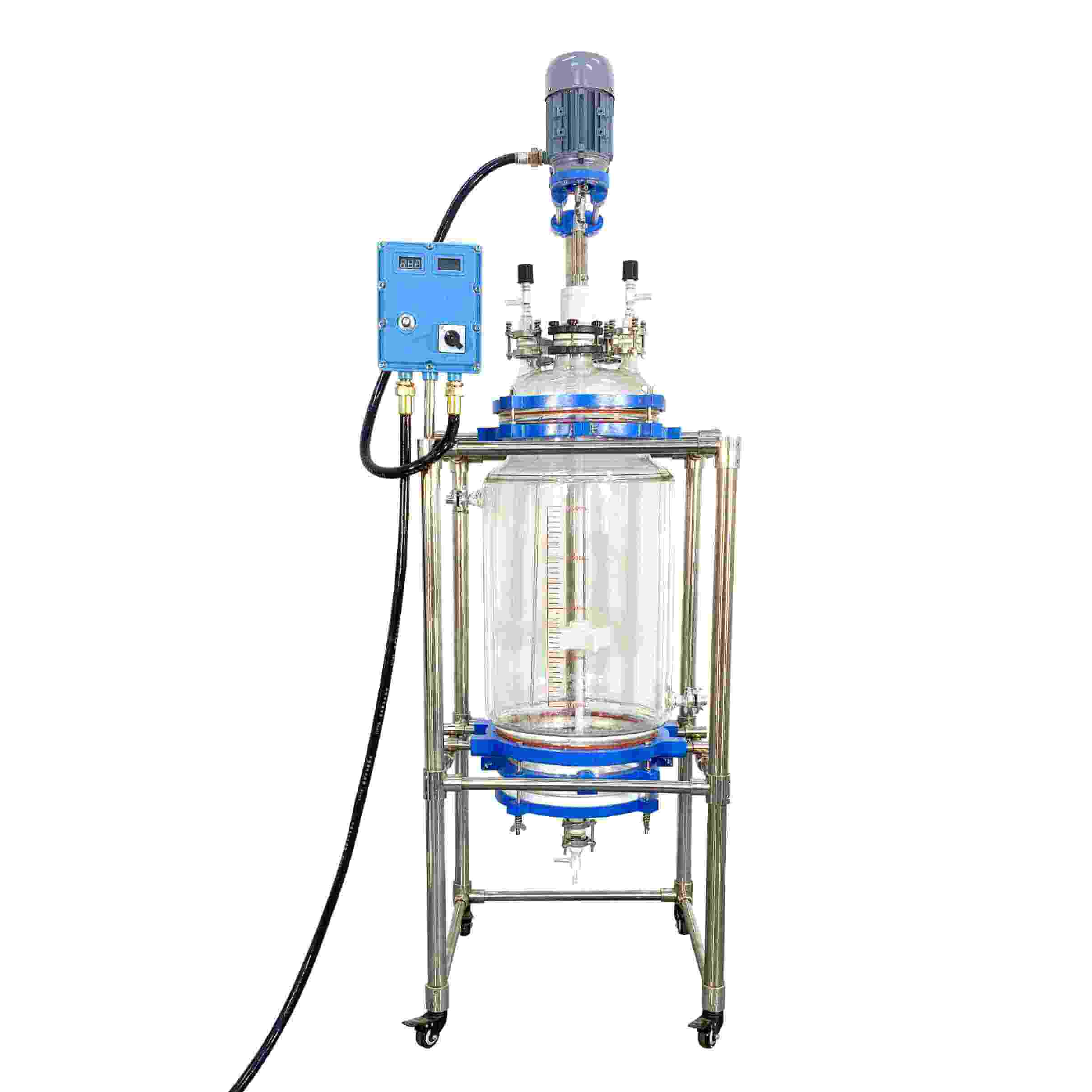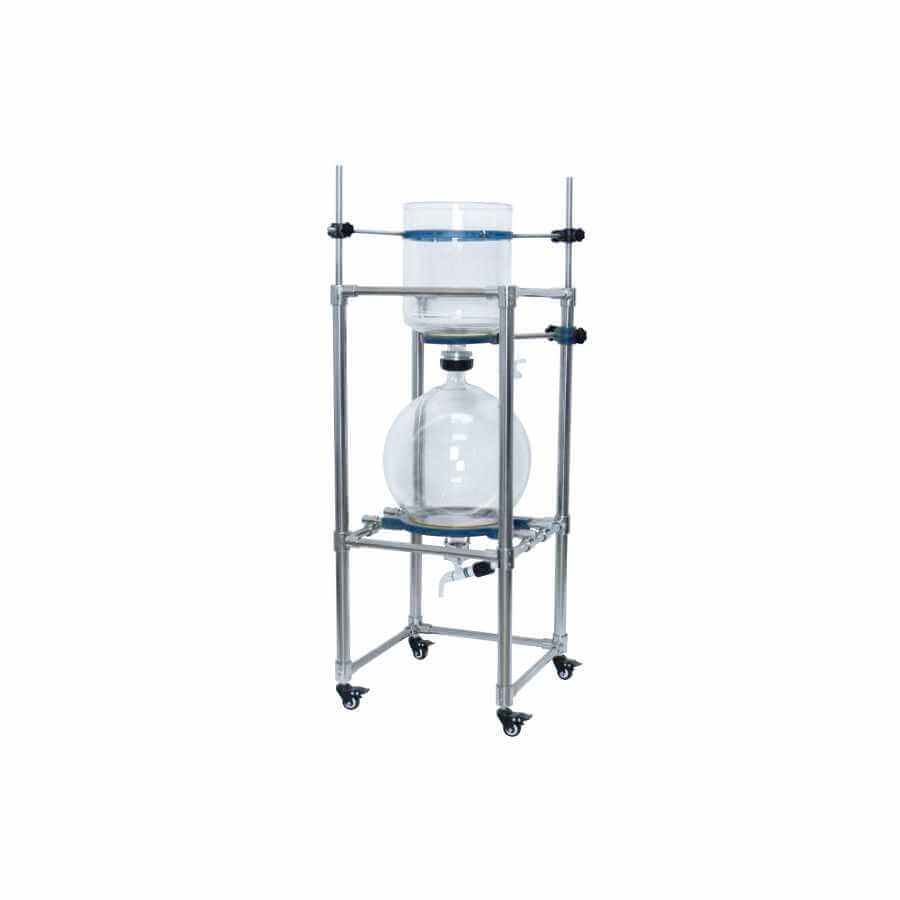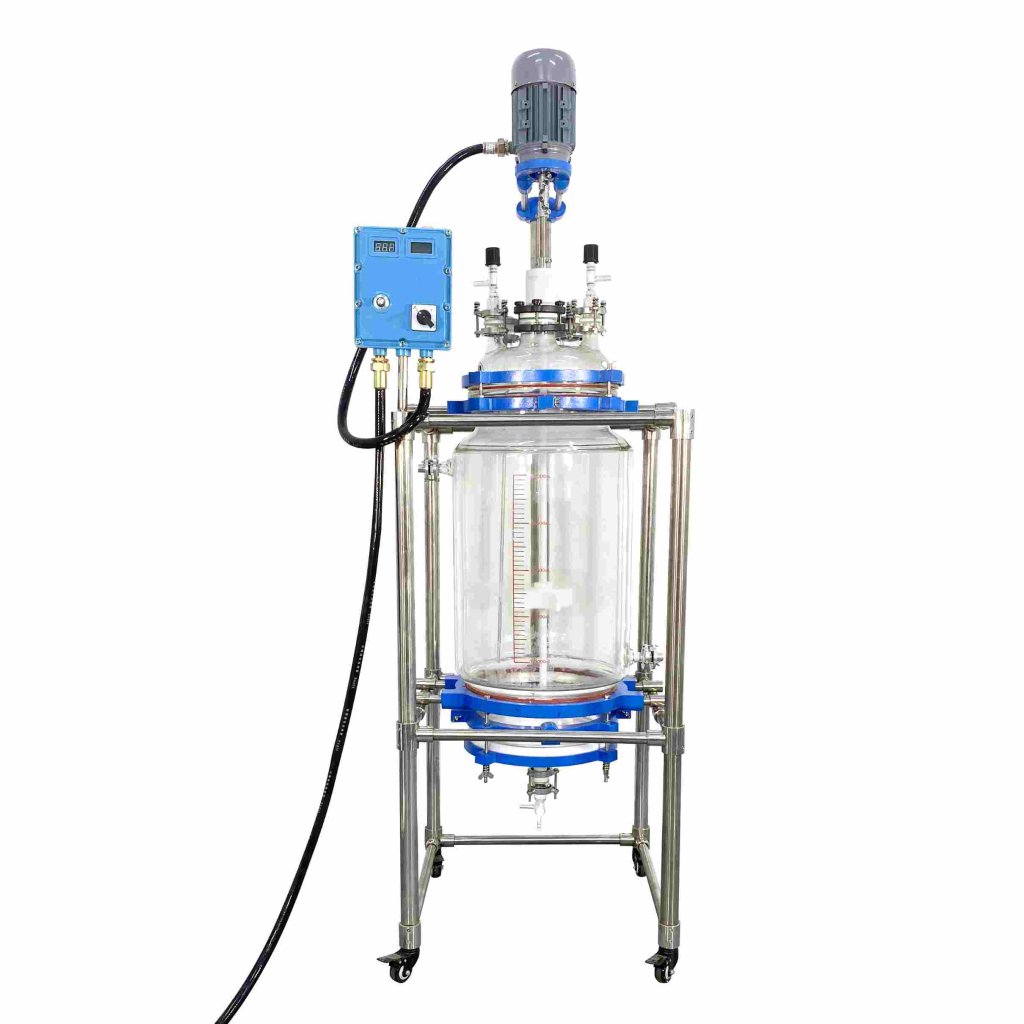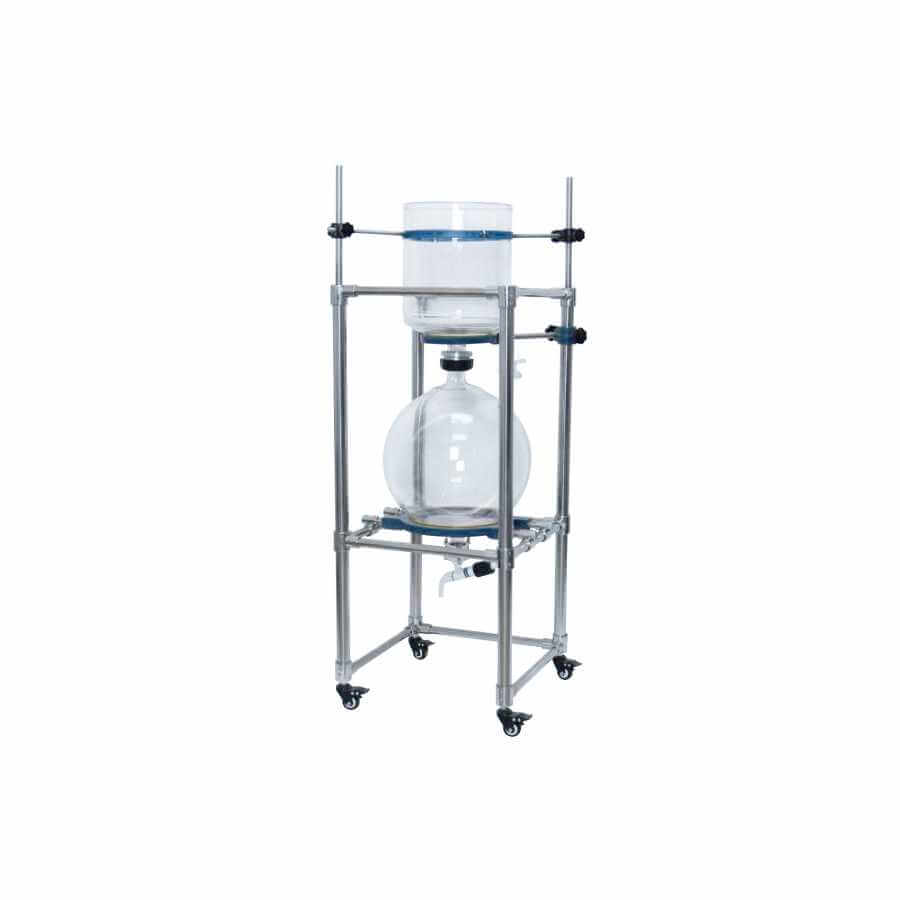

Glass Reactor
Glass reactors: used in chemical reactions, drug research and development, fine chemicals, food manufacturing, and other fields.
Material
glass
Capacity (L)
10-10000+
Mixing system
anchor, paddle, frame and others
Heating system
electric heating, oil heating and others
RUNGYU glass reactors are commonly used biochemical instruments and are widely used in modern fine chemicals, biopharmaceuticals, scientific research and experiments, and other industries. They can be used for concentration, distillation, reflux, separation, and purification reactions under the conditions of constant speed, constant force, and constant temperature. It is an ideal equipment for teaching, experiment, pilot test, and production.
Request a quoteGlass reactors are widely used in the chemical industry, medicine, food, metallurgy, and other fields. Correct installation and maintenance can ensure the normal operation of the glass reactor while improving work efficiency and safety. The installation of glass reactors requires an indoor space that meets the requirements for safe operation. If there are multiple glass reactors in the room, the installation location of each glass reactor should be planned and placed separately. Each installation and operation room needs to be well-ventilated to avoid safety problems.

Installation requirements for glass reactors
1. Choose a suitable installation location
Choose a dry, well-ventilated place to install the glass reactor, and keep it away from flammable and explosive items and corrosive substances such as strong acids and alkalis.
2. Check device integrity
Before installation, it is necessary to carefully check whether all the main parts and accessories of the glass reactor are complete and intact to ensure that there is no damage or missing. Read the installation manual carefully and install it according to the operating specifications.
3. Mounting Brackets and Bases
Use accurate equipment and measuring instruments to record the size and weight of the glass reactor. Choose the appropriate bracket and base to avoid mismatching and ensure that the glass reactor after installation is stable and reliable.
4. Connect the pipeline and power supply
Read the instructions carefully to ensure that the accessories are neat and intact, make sure that each line is correctly connected to the inlet and outlet pipelines and power lines, and ensure that the connection is firm and there are no safety hazards such as water leakage and short circuits.
Installation and sealing of the kettle body and lid of the glass reactor
Use appropriate gaskets, conical surfaces, or arc surfaces to make the glass reactor kettle body and the kettle lid incorrect contact, and follow the correct tightening method to compact and compact each other to achieve a good sealing effect. And connect the arcs at both ends while ensuring that the sealing surfaces cannot rotate relative to each other.
When assembling all screw joints, lubricant or graphite mixed with oil must be applied to avoid seizure. When tightening the nuts, do not exceed the specified tightening torque range of 40~120N.M. It needs to be piled up in focus and tightened gradually in small amounts and multiple times.
The force must be correct and even to ensure that the glass reactor does not tilt to one side. After the seal is confirmed, the sealed surface needs to be specially protected. Before each installation, the surface needs to be wiped clean with a soft paper towel or cloth, and the kettle body and the lid must not be bumped and there are no traces. If properly operated, it can be used tens of thousands of times. If the sealing surface is damaged, it needs to be reprocessed and repaired to achieve good sealing performance. When removing the kettle cover, the kettle cover should be slowly lifted up and down to prevent the sealing surfaces between the kettle body and the kettle cover from colliding with each other.
After installation, it needs to be vacuumed for 30 minutes to check for leaks. If a leak is found, you need to use soap foam to find the leak point of the pipeline and nozzle, find out, ventilate, and tighten, and perform a pressure-holding test again to ensure that the vacuum degree is normal before starting to work normally.

Daily maintenance of glass reactor
1. Regular cleaning and inspection
Regularly clean the dirt inside and outside the glass reactor and check for damage or corrosion. When cleaning, neutral detergent should be used, and corrosive substances should be avoided.
2. Pay attention to temperature control
Pay attention to the temperature control of the glass reactor during use to avoid equipment damage or incomplete reaction caused by too high or too low temperature.
3. Servicing the agitator and seals
Regularly check and maintain the agitator and seals to ensure their normal operation and sealing performance to avoid leakage and uneven mixing.
4. Pay attention to safe operation
During use, follow the operating procedures to avoid accidents caused by overloading and improper use. At the same time, it is necessary to regularly check the working status of safety devices such as safety valves and pressure gauges to ensure their normal operation.
Common faults and solutions for glass reactors
1. Repair and Maintenance Program
Make regular repair and maintenance plans, including replacing worn parts, lubricating parts, calibrating instruments, etc., to ensure long-term stable operation of equipment.
2. Seek professional help
If you encounter unsolvable failures or need to carry out large-scale repairs and replacement parts, you should seek help from professional technicians in time to ensure safety and effectiveness.
The correct installation and maintenance of the glass reactor is the key to ensure the normal operation. By following the installation and maintenance guidelines, the service life of the equipment can be increased, the probability of failure can be reduced, and the safety and efficiency of laboratory and industrial production can be ensured. At the same time, regular maintenance and maintenance are also helpful to discover potential problems and solve them in time to ensure the long-term stable operation of the equipment.




